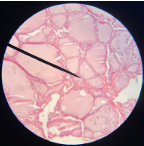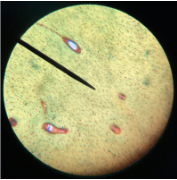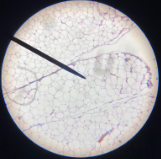Anatomy Test 2 Study Guide
5.0(1)
5.0(1)
Card Sorting
1/52
Study Analytics
Name | Mastery | Learn | Test | Matching | Spaced |
|---|
No study sessions yet.
53 Terms
1
New cards
True or False: The origin of the semitendinosus is the Superolateral Ischial.
False
2
New cards
True or False: The origin of the sartorius is the anterior illiac spine
True
3
New cards
What is the origin of the semimembranosus?
Ischial Tuberosity
4
New cards
The insertion of the sartorius is at the \[blank\] end of tibia \[blank\] to the medial condyle
Proximal and Inferior
5
New cards
What is the insertion of the Bicep Femoris?
Head of fibula
6
New cards
At what joint is the origin of the popliteus located?
Tibiofemoral Joint
7
New cards
True or False: The origin of the tensor fascia latae is the anterior superior iliac spine and outer lip of the anterior iliac crest.
True
8
New cards
True or False: The insertion of the Adductor Brevis is the linea aspera of femur (medial lip)
True
9
New cards
True or False: The insertion of the Vastus Lateralis is the Tibial Tuberosity and patella.
True
10
New cards
What is the insertion of the Tensor Fascia Latate?
Iliotibial Tract/Band
11
New cards
True or False: the biceps femoris stabilizes the pelvis.
True
12
New cards
True or False: The gluteus maximus can do thigh extension.
True
13
New cards
The ______ __________ is responsible for leg extension in the knee joint.
Vastus Intermedius
14
New cards
Which muscle is responsible for leg flexion and leg internal rotation?
Sartorius
15
New cards

What type of epithelium is this?
Simple Cuboidal
16
New cards
True or False: Simple pseudostratified columnar epithelium is one layer that gives the appearance of multiple layers
True
17
New cards
What is the epithelium that is composed of single layer cells that are longer than they are wide?
Simple Columnar Epithelium
18
New cards
Name of epithelial tissue with many layers of cells, squished together, forming outermost layer of tissues:
Stratified Squamous Epithelium
19
New cards
Which of the following is the correct term for a single layer of flat cells?
Simple Squamous Epithelium
20
New cards
True or False: Epithelial Tissues line hollow organs
True
21
New cards

What connective tissue is shown in the image?
Bone
22
New cards
Which is not a type of supportive connective tissue?
* Hyaline, bone, cartilage, blood, elastic
* Hyaline, bone, cartilage, blood, elastic
Blood
23
New cards
______ connective tissue allows the body to maintain it's posture and protect internal organs.
Supportive
24
New cards

What connective tissue is this?
* Areolar tissue, Adipose tissue, Compact bone, or blood
* Areolar tissue, Adipose tissue, Compact bone, or blood
Adipose Tissue
25
New cards
What are the three types of connective tissue fibers?
Collagen, Elastic, Reticular
26
New cards
_____ connective tissue acts both to absorb shock and bind tissues together.
Loose
27
New cards
True or False: The collagen, elastic, and reticular are the fibers found in connective tissue
True
28
New cards
What is the function of the epidermis?
Protects from the outside and regulates body heat.
29
New cards
What are the three layers of the Integumentary system?
Epidermis,Dermis, and Hypodermis.
30
New cards
What critical role does the Dermis layer play in the body?
* Cushions the body, sensory reception, temperature regulation, protects from chemicals, waterproof
* Cushions the body, sensory reception, temperature regulation, protects from chemicals, waterproof
Temperature Regulation
31
New cards
True or False: The Epidermis is the topmost layer of the skin?
True
32
New cards
The skin prevents unnecessary _______ loss.
Water
33
New cards
True or False: One function of hair is to sense light touch of skin
True
34
New cards
Which is not true about nails?
* Made up of hardened keratin, grows from nail matrix, damage of nails does not last more than a month, they are like hooves or claws of other mammals
* Made up of hardened keratin, grows from nail matrix, damage of nails does not last more than a month, they are like hooves or claws of other mammals
Damage of nails does not last more than a month
35
New cards
Where is the hair derived from?
Epidermis and Dermis
36
New cards
What is **NOT** included in the Skin appendages
* nails, cells, hair, sweat glands
* nails, cells, hair, sweat glands
Cells
37
New cards
Nails grow from the _____
Nail Matrix
38
New cards
The nail is made up of ______ ______
Hardened Keratin
39
New cards
A _____ burn is a superficial burn that only effects the epidermis and doesn't blister.
First Degree
40
New cards
A _____ burn has 10% of the body having 3rd degree burns, 25% 2nd degree, and 3rd degree on the face, hands, and feet
Critical
41
New cards
A tumor (skin cancer) may be identified by the irregularity of its ______.
Border
42
New cards
_____ cancer is the most dangerous recognition of skin cancer
Melanoma
43
New cards
Which of the following is **NOT** a type of burn?
* first degree burn, tenth degree burn, third degree burn, second degree burn
* first degree burn, tenth degree burn, third degree burn, second degree burn
tenth degree burn
44
New cards
Which of the following below is not a type of connective tissue?
* Loose tissue, Dense tissue, solid tissue, supportive tissue, fluid tissue
* Loose tissue, Dense tissue, solid tissue, supportive tissue, fluid tissue
Solid Tissue
45
New cards
What is a type of a burn that destroys the epidermis, dermis, and often part of hypodermis?
Third degree burn
46
New cards
True or False: The Dermis layer is the middle layer of your skin
True
47
New cards
Why do you sweat?
To cool down and control body temperature
48
New cards
___ degree burn affects both the epidermis and the second layer of skin
2nd
49
New cards
Which is not a disease/disorder of the skin?
* Gastritis, alopecia, melanoma
* Gastritis, alopecia, melanoma
Gastritis
50
New cards
Other than the skin what is a body "surface" that is exposed to the outside and needs a lining of epithelium?
* Blood, Kidney, Eye, Oral Cavity/Esophagus, or Endocrine gland
* Blood, Kidney, Eye, Oral Cavity/Esophagus, or Endocrine gland
Oral Cavity/Esophagus
51
New cards
Adductor Longus inserts at the body of ____
Pubis
52
New cards
Which muscle's origin is at the gluteal surface of the ilium?
* Gluteus maximus, tensor fascia latae, gluteus medius, biceps femoris, adductor magnus
* Gluteus maximus, tensor fascia latae, gluteus medius, biceps femoris, adductor magnus
Gluteus Medius
53
New cards
Epitheal tissue makes up __, __, and__ membranes.
Mucous, serous, cutaneous